If you were planning a meal in a Greek restaurant, what would you expect to pick off the menu? I’m betting it will be a salad of tomatoes, cucumber, onion, cured black olives if you’re lucky, sliced green peppers if you’re not. With barbecued pork or lamb on skewers. Or some lemon-roasted chicken on a bed of squidgy lemon-flavoured potatoes, all garlicky and delicious. Or perhaps tonight’s the night for a pile of deep-fried little fishes, or one or two fried red mullet. All with a dish of tzadziki, obvs, or some taramasalata, perhaps.
But fava puree? With capers or chunks of rusk or a shawl of oiled-and-lemon-spritzed horta (wild greens)? Unlikely. There won’t be any such surprises. That’s what’s so comforting about the food at Zorba’s, or the Venus Taverna, or whatever your local Greek is called. Traditional Greek cooking, you might think, hasn’t changed much in 4000 years. After all, it hasn’t changed at Dino’s.
When I lived in a remote Greek fishing village (now a hotel-lined celebration of the sloganned t-shirt and evil-eye bracelet), I ate food never seen in any restaurant, inside Greece or out of it. Why not, I asked. With a roll of their eyes, the yiayias who took my well-being and education in hand explained that the only people who patronised restaurants were travelling salesmen and tourists, so why push the boat out. If any local man took his family to eat in one, it would be an admission he hadn’t married wisely - that his own wife couldn’t cook.
I’ve just returned from ferrying from island to island in the lower Cyclades. The further away from Piraeus you travel, the closer you get to distinctive ‘local’ cuisine. On summer escapes to islands in the even more southerly Dodecanese, the classic Greek horiatiki salad included pickled caper leaves and stalks, and chunks of dried rusks. Red shrimp to be crunched whole were tossed in semolina before being quickly fried. Yigandes, the large lima beans known as butter beans in the UK, were black not beige.
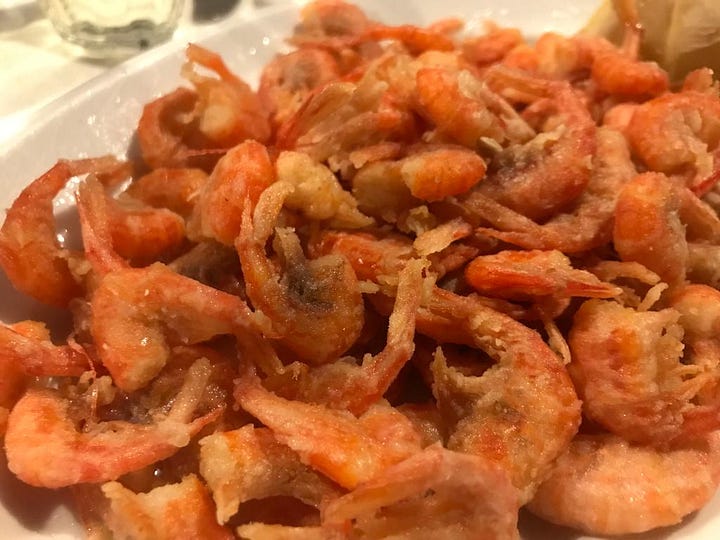
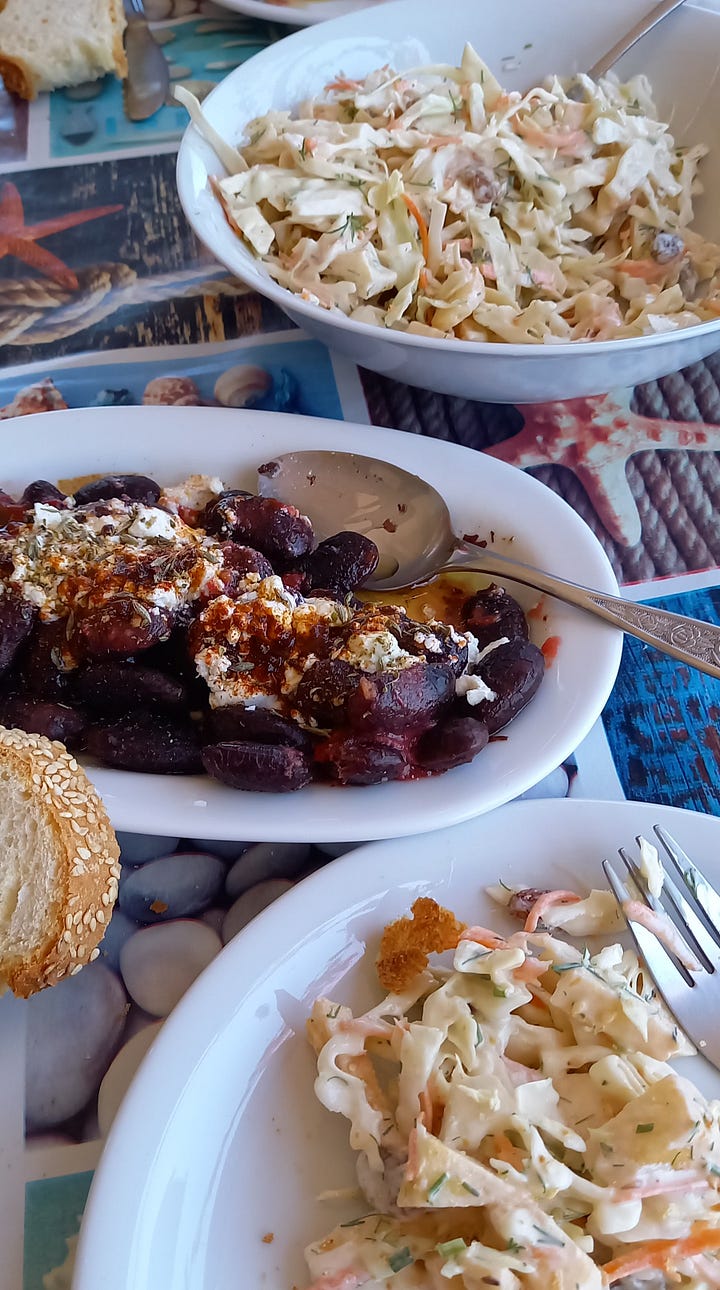
Greek island food has been influenced by all manner of marauders and traders, from Romans and Arabs to Venetians and the Genoese, from Ottoman Turks to (briefly in the Middle Ages) the Catalans, and, in the 18th century, the Russians and French. Centuries back, the Arabs introduced lemons, the most common element in Greek cooking. But the tomato, one of the key components of horiatiki salad and so many stews, didn’t become either widespread or popular until the end of the 19th century.
Island Greeks still look to the mountains and fields for their daily ingredients - for their horta (wild greens), and the wild fennel, mint and oregano that flavour so much of the food. They cultivate lentils, beans and other legumes not just to eat but to provide nutrients for poor island soil, restoring nitrogen that was taken up by growing vegetables.
Who could imagine that by skimming the 12.5 nautical miles of the Aegean between the tiny island of Sifnos and the larger Serifos that the food would change so dramatically? Hand-made sausages on Sifnos were flavoured with orange zest. On Serifos, it was the slow-cooked pork. Serifos is renowned for its louza, local ‘prosciutto’ cured with cumin, allspice, black pepper and garlic. Sifnos is famous for revithia, a chickpea stew flavoured with bay leaves and rosemary and stewed, like so much else on the island, in a clay pot called a gastra, said to have given its name to ‘gastronomy’. On Saturday evenings in villages in the interior of Sifnos, women come to the bakeries with their gastra sealed with a piece of dough to slowly cook all night long among the embers of the baker’s wood-burning oven. They return on Sunday mornings to collect their revithia after church, to eat for lunch with the baker’s fresh crusty bread. Sifnos’ potato salad came warm, with almost more chopped fresh dill, parsley, mint, and green onions than potatoes folded into it, everything swimming in a warm lemon dressing. Its caper salad could stand in for onion marmalade, a melt of slow-cooked leaves and stalks and berries in a sweetened vinegar. On most of the Cyclades, the shoots of amaranth, a plant grown in the US and the UK in a herbaceous border, are eaten cooked; purslane, a weed in western parks and gardens, appears raw in salads. (You may wonder why there’s little mention of fish. Fish is not plentiful in the Aegean. Fishermen wisely sell their catch for greater profit to Athens. Islanders patiently cast a line into the water, perhaps an excuse to do nothing, or otherwise wait at the port to negotiate privately for a fish.)
This is what eating ‘locally’ means in Greece.


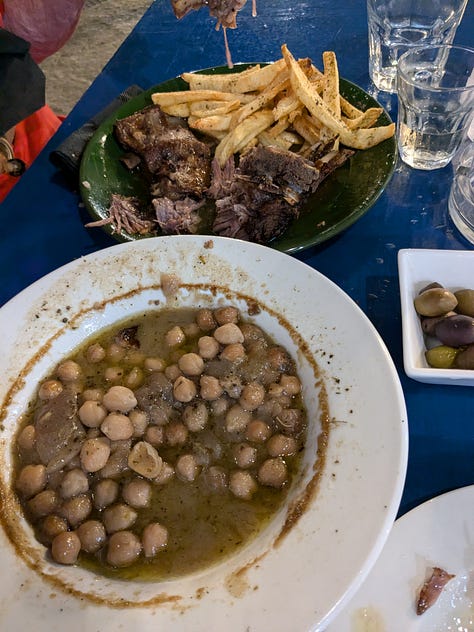


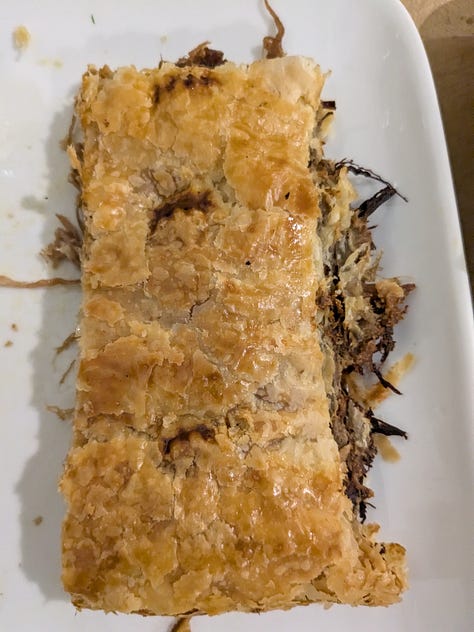
We westerners have narrowed the definition of eating ‘local’ to ingredients. But it also applies to recipes. It’s not unusual in Greece for cooks in one village to be unfamiliar with a dish popular in another village only a couple of miles away. From one island to the next, waiters look blank at an order for a dish that is a common feature on the menus of restaurants just an hour’s ferry ride away.
Little time is apportioned these days to labouring over the stove. Who now learns traditional culinary skills beyond creating heavily decorated fairy cakes with devoted grandmothers? As adults we have demanding jobs, demanding families, demanding schedules. And with the convenience of home delivery services and pre-portioned boxed meals ready-to-cook, why should we spend hours in the kitchen? Yet if we don’t learn to cook from scratch, we’re in danger of losing traditional recipes - quite apart from lining the coffers of Big Food Biz whose investors would so much rather we depended on them for our food (although we can’t for our nutrition because they don’t always offer that). Just a few repetitive clicks on similar Instagram food reels quickly narrow down the recipes you’re shown by the algorithm. Food adventures will narrow.
Society’s privileged (not people, many of whom are in work, who struggle to find their next meal or to cook for their children in between the shifts of the more than one job needed to keep the family from falling off a cliff), are in danger of allowing food traditions to disappear because we don’t allot time to cooking.
Yet we are happy to devote it to our mobile phones. The average time in 2024 for users around the world aged 16 to 64 staring at their tiny screens is 6 hours 35 minutes daily. According to the US’s Centers for Disease Control and Prevention (CDC), the average for children between 8 to 10 is 6 hours. For 11 to 14 year-olds it’s 9 hours. If some of that time were diverted to cooking for our families and friends, then our household budgets, our nutrition, our relationships with our children and our partners and - golly! - our anxiety levels, would surely benefit.
Novice cooks could start with this irresistible way to roast potatoes. They’re easy and wonderful with the also easy recipe that follows it which works with lamb, chicken, veal and also, as often in Greece, young goat. Both recipes serve 4-6.
1kg 30g/3 lbs baking potatoes, peeled and sliced into wedges
120ml/½ cup olive oil
4-6 garlic cloves, peeled and finely minced
1 heaped teaspoon dried oregano, crumbled
salt and freshly ground black pepper to taste
120ml/½ cup chicken or beef stock
75ml/⅓ cup freshly squeezed lemon juice
2-3 tablespoons finely chopped fresh oregano
Preheat oven to 200C/400F.
Spread the potatoes in a single layer across a baking dish. Pour over the oil, toss, add the garlic, oregano, salt and pepper and toss again thoroughly to coat. Bake 15 minutes then add the stock, toss yet again then bake 10 minutes more. Add the lemon juice, toss (sorry) and bake another 10-15 minutes till the potatoes are cooked through. Broil under a pre-heated grill for 2-3 minutes till golden brown, although you can ignore this, sprinkle with the fresh oregano and serve. Vegetarians might eat this just with a tomato and cucumber salad.
Oregano Lamb
75ml/⅓ cup olive oil
1 large red onion, peeled and sliced
5-6 shoulder lamb chops or generous 1kg/2½ pounds of other meat, in large pieces
235ml/1 cup warm water
120ml/½ cup dry white wine
4-5 cloves garlic, peeled and finely slivered
1 tablespoon dried oregano, crumbled
75ml/⅓ cup freshly squeezed lemon juice
salt and freshly ground black pepper to taste
1 tablespoon each roughly chopped flat-leaf parsley
Heat the oil over medium heat in a deep lidded casserole and saute the meat in batches, turning it regularly, until browned inside and out, about 10 minutes. Transfer with a slotted spoon to a platter then add the onions, toss in the oil, cover and cook till softened a bit, 5 minutes or so. Return the meat. Add the next four ingredients. Reduce the heat to low, cover and simmer for 30 minutes.
Add the lemon juice, salt and pepper, turn the lamb, cover, simmer a further 20-30 minutes till fully tender, toss over the parsley then serve.


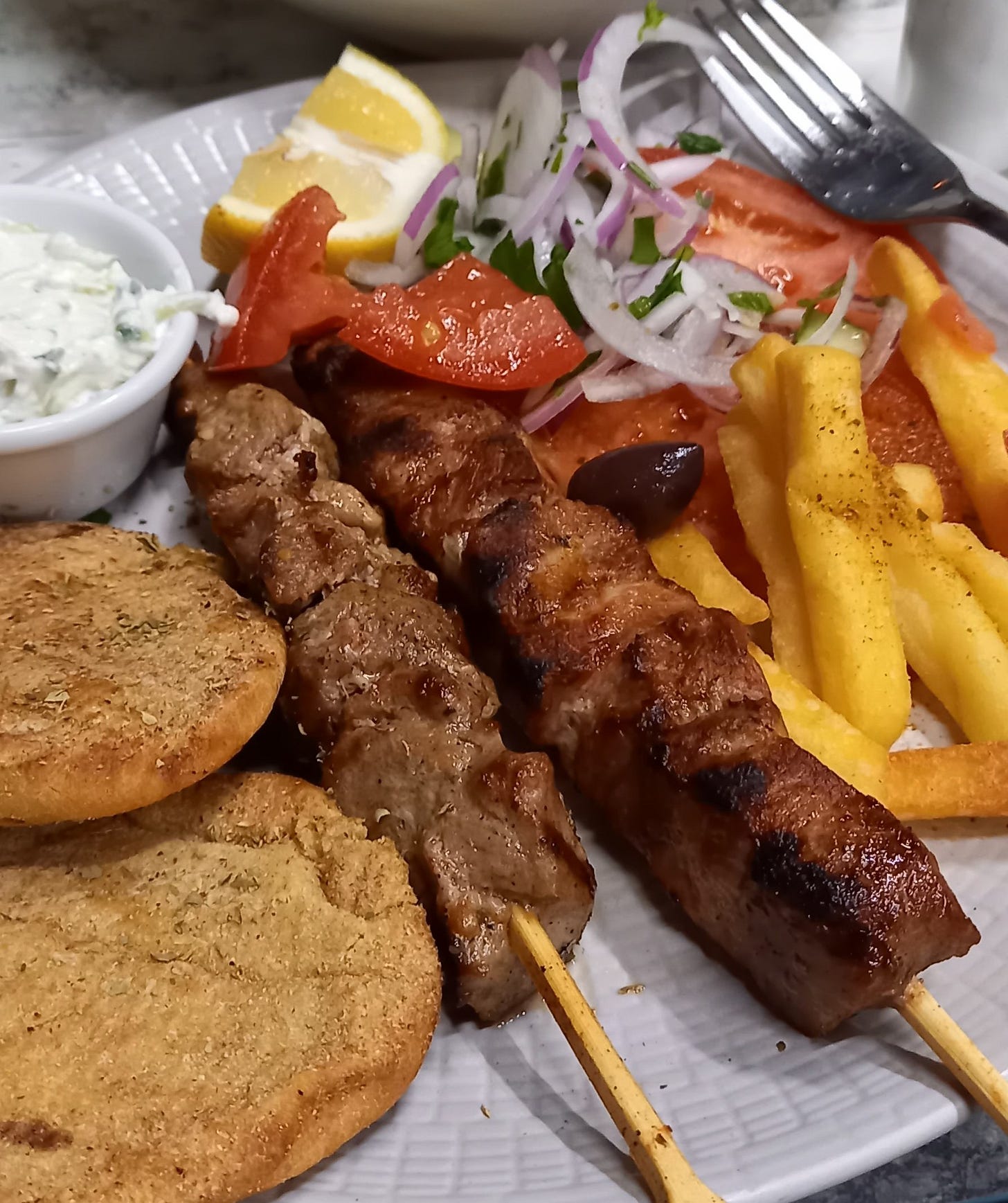
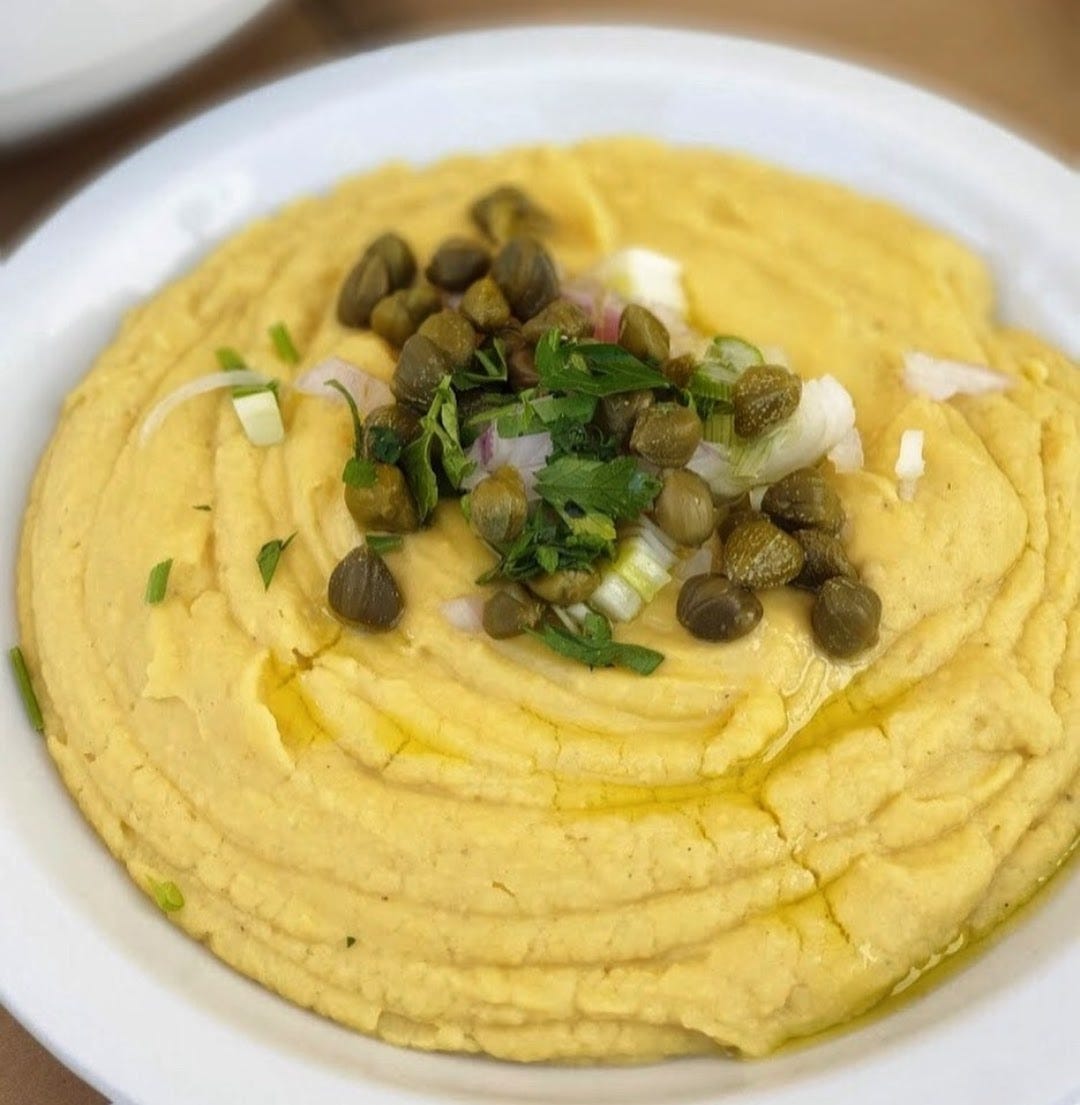

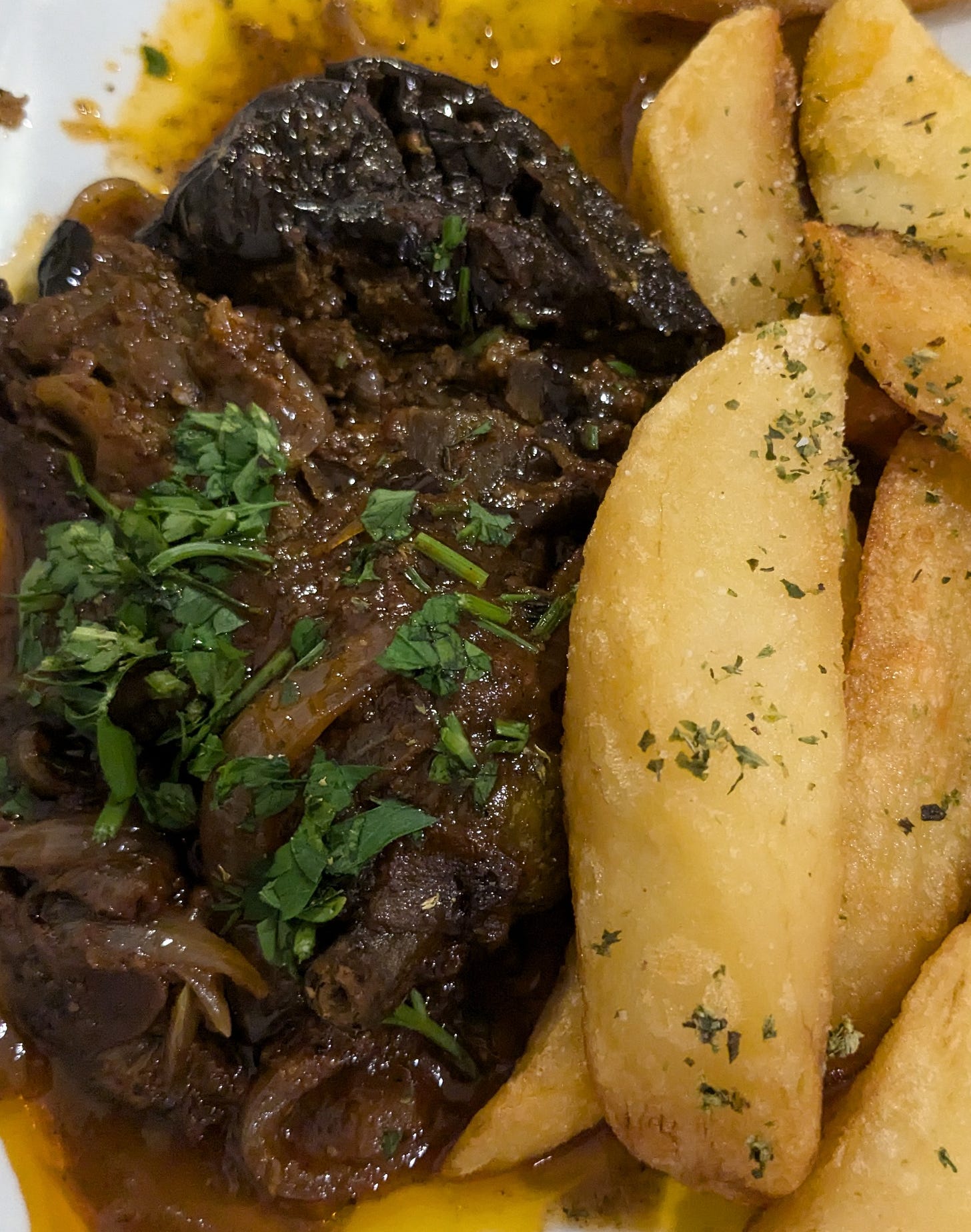
This is one of the best things I've read in a while, sharply observed and poignant. The great homogenizer is grinding all before it to paste. Very sad.
Always get off the beaten track and eat where the locals eat. We did an impulse trip to Venice years ago (caught the train from Bologna first thing in the morning, spend the day wandering the back streets of Venice, and then the train back in the evening). It was the most memorable experience, working out what to eat from Italian-only menus, ordering food in very broken Italian. It was the same in Florence - you learn much more and meet people that are just doing their everyday life, rather than supporting tourism. Even in Bangalore, it was a relief to walk out my hotel, and cruise the back streets and alleyways, where interesting enough, I was never hassled, unlike on the main streets, or in my work-provided chauffered car (I will admit to not eating in Bangalore without a guide).